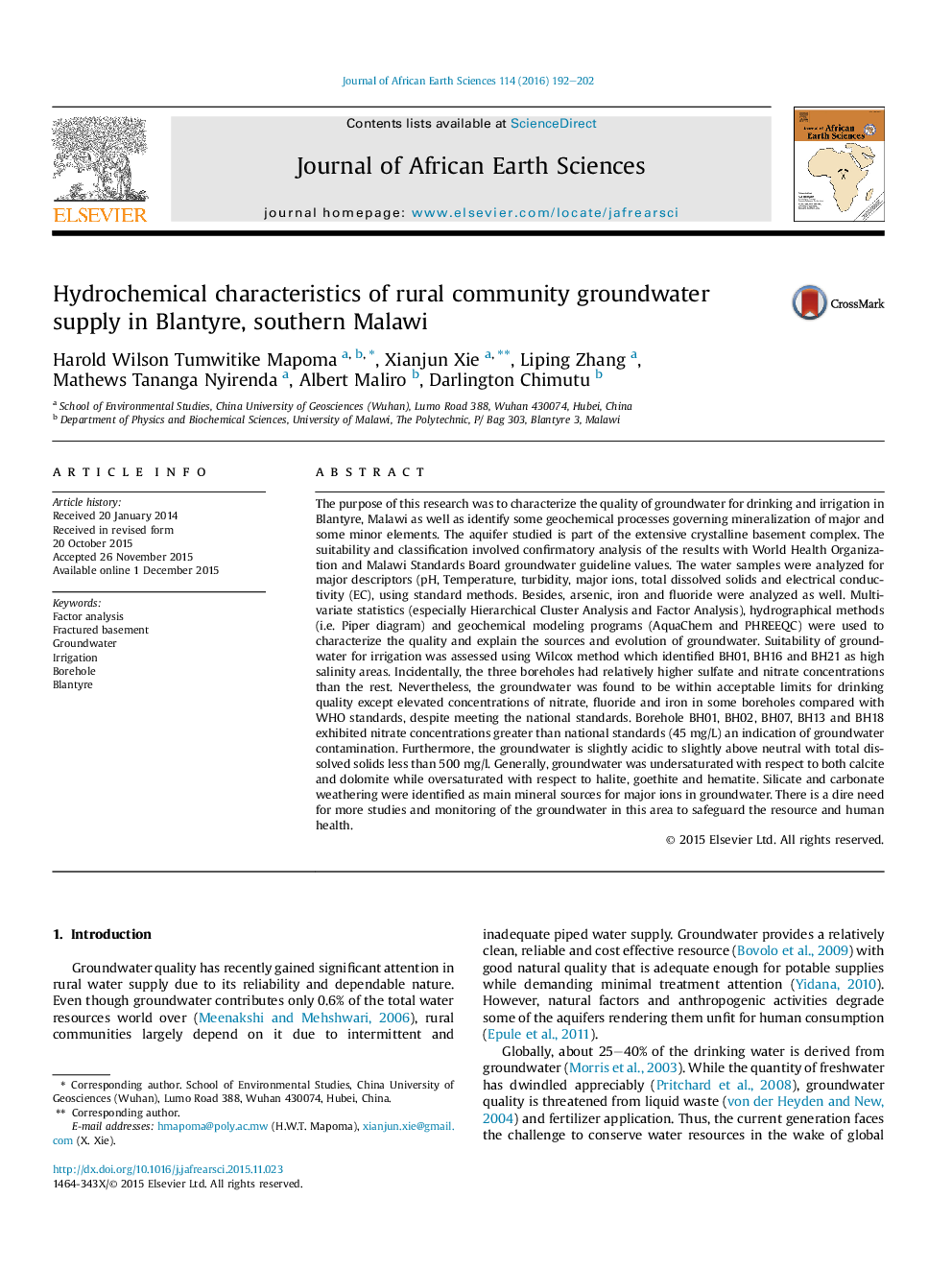| کد مقاله | کد نشریه | سال انتشار | مقاله انگلیسی | نسخه تمام متن |
|---|---|---|---|---|
| 4728471 | 1640194 | 2016 | 11 صفحه PDF | دانلود رایگان |
• Wilcox method shows groundwater is suitable for irrigation.
• Langelier Saturation Index indicates the groundwater is devoid of scale forming potential.
• Silicate and carbonate weathering controls mineralization.
• Cation exchange process plays a significant role in the study area.
The purpose of this research was to characterize the quality of groundwater for drinking and irrigation in Blantyre, Malawi as well as identify some geochemical processes governing mineralization of major and some minor elements. The aquifer studied is part of the extensive crystalline basement complex. The suitability and classification involved confirmatory analysis of the results with World Health Organization and Malawi Standards Board groundwater guideline values. The water samples were analyzed for major descriptors (pH, Temperature, turbidity, major ions, total dissolved solids and electrical conductivity (EC), using standard methods. Besides, arsenic, iron and fluoride were analyzed as well. Multivariate statistics (especially Hierarchical Cluster Analysis and Factor Analysis), hydrographical methods (i.e. Piper diagram) and geochemical modeling programs (AquaChem and PHREEQC) were used to characterize the quality and explain the sources and evolution of groundwater. Suitability of groundwater for irrigation was assessed using Wilcox method which identified BH01, BH16 and BH21 as high salinity areas. Incidentally, the three boreholes had relatively higher sulfate and nitrate concentrations than the rest. Nevertheless, the groundwater was found to be within acceptable limits for drinking quality except elevated concentrations of nitrate, fluoride and iron in some boreholes compared with WHO standards, despite meeting the national standards. Borehole BH01, BH02, BH07, BH13 and BH18 exhibited nitrate concentrations greater than national standards (45 mg/L) an indication of groundwater contamination. Furthermore, the groundwater is slightly acidic to slightly above neutral with total dissolved solids less than 500 mg/l. Generally, groundwater was undersaturated with respect to both calcite and dolomite while oversaturated with respect to halite, goethite and hematite. Silicate and carbonate weathering were identified as main mineral sources for major ions in groundwater. There is a dire need for more studies and monitoring of the groundwater in this area to safeguard the resource and human health.
Journal: Journal of African Earth Sciences - Volume 114, February 2016, Pages 192–202
